Serving the chemical, life science, and laboratory worlds
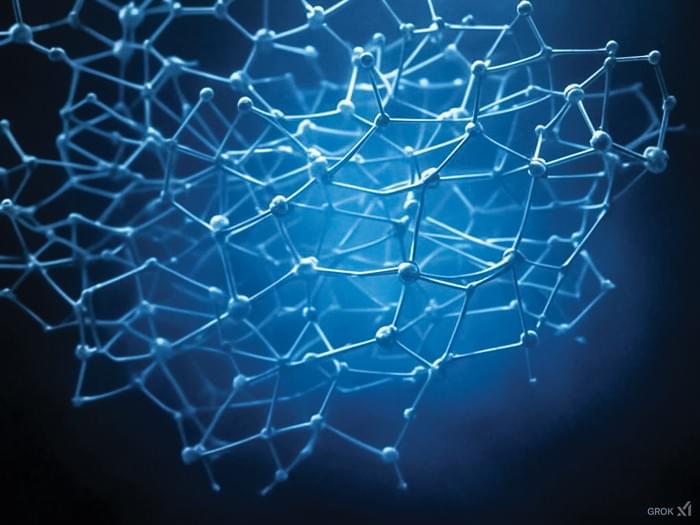


A new method inspired by coral reefs can capture carbon dioxide from the atmosphere and transform it into durable, fire-resistant building materials, offering a promising solution for carbon-negative construction.
The approach, developed by USC researchers and detailed in a study published in npj Advanced Manufacturing, draws inspiration from the ocean’s coral reefs’ natural ability to create robust structures by sequestering carbon dioxide. The resulting mineral-polymer composites demonstrate extraordinary mechanical strength, fracture toughness and fire-resistance capabilities.
“This is a pivotal step in the evolution of converting carbon dioxide,” said Qiming Wang, associate professor of civil and environmental engineering at the USC Viterbi School of Engineering. “Unlike traditional carbon capture technologies that focus on storing carbon dioxide or converting it into liquid substances, we found this new electrochemical manufacturing process converts the chemical compound into calcium carbonate minerals in 3D-printed polymer scaffolds.”

Researchers at Indiana University and Wuhan University in China have unveiled a groundbreaking chemical process that could streamline the development of pharmaceutical compounds, chemical building blocks that influence how drugs interact with the body. Their study, published in Chem, describes a novel light-driven reaction that efficiently produces tetrahydroisoquinolines, a group of chemicals that play a crucial role in medicinal chemistry.
Tetrahydroisoquinolines serve as the foundation for treatments targeting Parkinson’s disease, cancer, and cardiovascular disorders. These compounds are commonly found in medications such as painkillers and drugs for high blood pressure, as well as in natural sources like certain plants and marine organisms.
Traditionally, chemists have relied on well-established but limiting methods to synthesize these molecules. The new research, co-authored by Kevin Brown, the James F. Jackson Professor of Chemistry in the College of Arts and Sciences at Indiana University Bloomington, and Professors Xiaotian Qi, Wang Wang, and Bodi Zhao of Wuhan University, presents a fundamentally different approach.

From laundry detergent to dishwasher tablets, cleaning products are an indispensable part of life. Yet the chemicals that make these products so effective can be difficult to break down or could even trigger ecosystem-altering algal blooms. Now, researchers reporting in ACS’ Langmuir have addressed those challenges with an environmentally compatible detergent made of tiny wood fibers and corn protein that removes stains on clothes and dishes just as well as commercial products.
Increased public concern about household products’ impact on the environment has spurred interest in replacing traditional cleaners containing ingredients such as alkylphenol polyethoxylates and phosphates with natural alternatives. Efforts to date have produced mixed results because these cleaners are difficult to make and hard to rinse off, resulting in high manufacturing and retail costs, as well as potential damage to surfaces and fabrics. Therefore, there is a desire for low-cost, easily produced, effective alternatives that are gentle on the environment and the items they are designed to clean. To address this need, Pengtao Liu and colleagues developed an eco-friendly detergent from ingredients found in abundant renewable sources.
The researchers combined cellulose nanofibers from wood with zein protein from corn to create an emulsion. Cellulose can attract and repel water, so it is effective at forming such emulsions and attracting different types of stains. The zein protein, on the other hand, helps stabilize the emulsion and trap oils. Liu and colleagues then tested the cleaning capacity of the cellulose/zein detergent on cotton fabrics and dishes stained with ink, chili oil and tomato paste. They compared the performance of their new detergent to laundry powder and commercial dish soap solutions with deionized water.
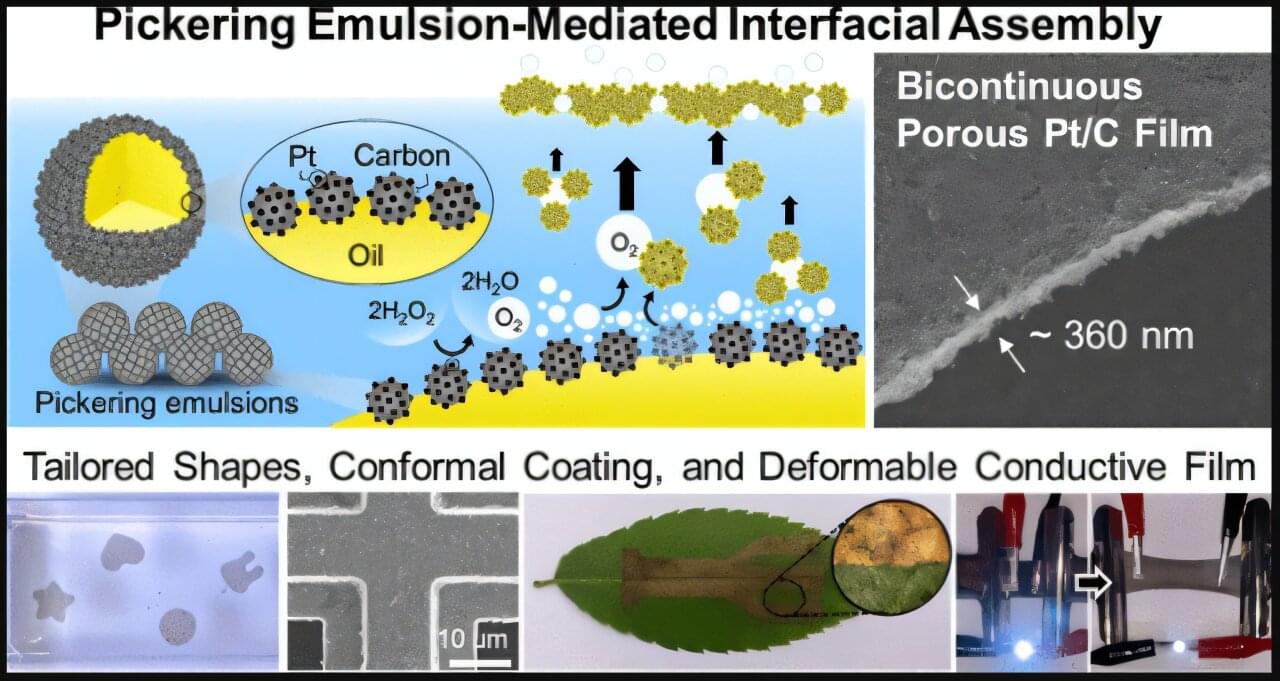
A new technology has been developed that enables the manufacturing of thin films, which typically require complex processes, using only water and oil in just one minute. Professor Kang Hee Ku and her research team from the School of Energy and Chemical Engineering at UNIST announced their novel process for creating catalytic thin films using oil droplets dispersed in water.
The developed technology involves a process in which nanomaterial precursors attached to the surface of oil droplets float to the surface of the water, where they assemble into a thin film. When hydrogen peroxide is added, it decomposes due to the thin film precursors, producing gas bubbles that cause the precursors to be lifted and assembled on the water surface within one minute.
This process allows for precise control of the thin film thickness, adjustable from 350 μm, and enables the synthesis of thin films covering an area of up to 100 cm² using various raw materials. The resulting thin films exhibit a porous structure with a high surface area, featuring exceptional mechanical strength and flexibility.
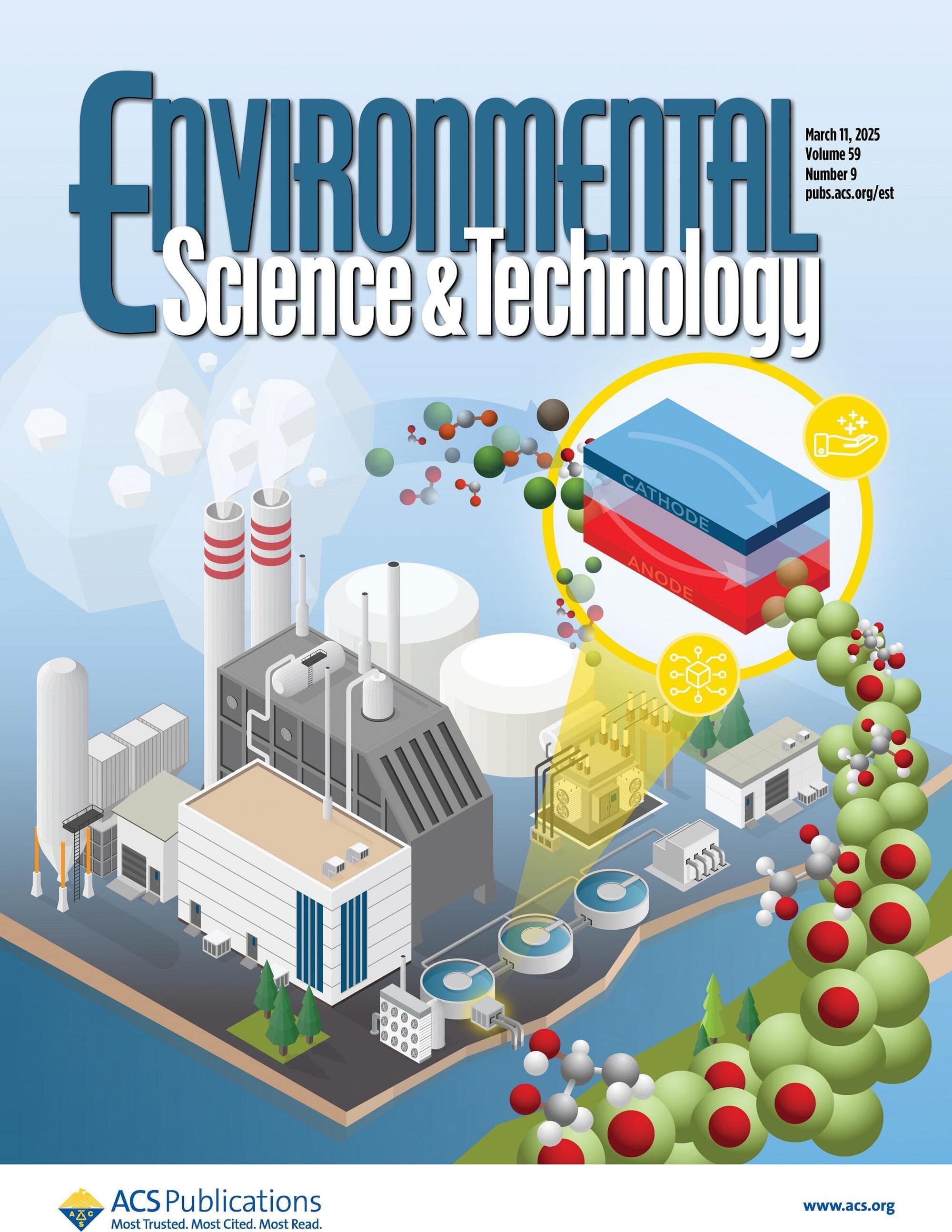
While biodiesel provides a cleaner-burning alternative to petroleum diesel, it produces CO2 and hazardous wastewater during manufacturing, requiring extra steps to achieve sustainability. A diagnostic study led by University of Michigan researchers works to improve a process that captures CO2 while treating biodiesel wastewater and produces valuable co-products like fuels and green chemicals.
During biodiesel production, fats—like vegetable oils, animal fats or recycled restaurant grease—are transformed into fuel through a process called transesterification. With the help of a catalyst, an alcohol (typically methanol) breaks the bonds in the fat molecules to create glycerol and long, chain-like molecules called fatty acid esters.
The fatty acid esters, which resemble petroleum diesel’s molecular structure, become biodiesel while the glycerol goes into the wastewater as a byproduct. If left untreated, glycerol can pollute natural water resources by depleting oxygen levels, suffocating fish and other organisms.
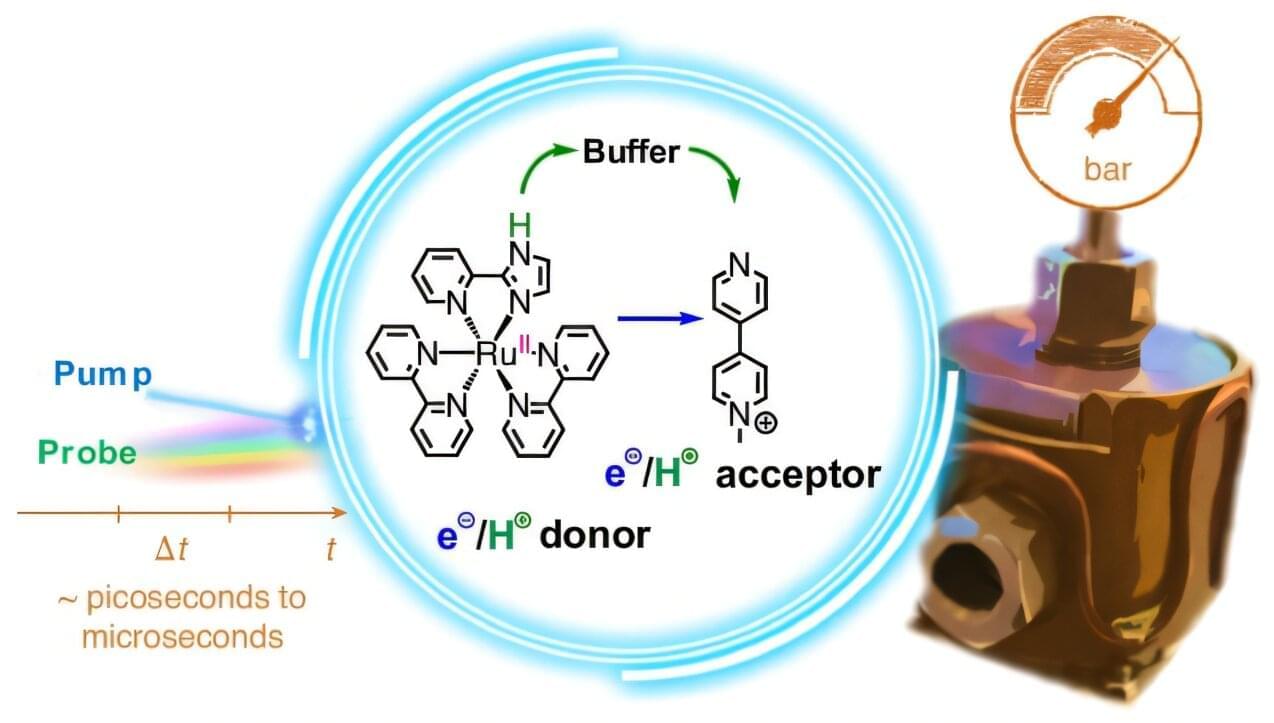
Redox reactions form the basis of many fundamental processes of life. Without them, neither cellular respiration nor photosynthesis could take place. Redox reactions also play a crucial role in applications in the domains of chemistry, biochemistry, and the use of light for energy generation. Understanding the fundamental principles of these reactions is therefore important for driving forward new technologies.
Using an innovative method based on high pressures, a team led by LMU chemist Professor Ivana Ivanović-Burmazović and Professor Dirk Guldi from FAU Erlangen-Nürnberg has managed for the first time to differentiate two related reaction mechanisms. The research is published in the journal Nature Chemistry.

If there were such a thing as a photo album of the universe, it might include snapshots of pancake-like disks of gas and dust, swirling around newly formed stars across the Milky Way. Known as planet-forming disks, they are believed to be a short-lived feature around most, if not all, young stars, providing the raw materials for planets to form.
Most of these planetary nurseries are short-lived, typically lasting only about 10 million years—a fleeting existence by cosmic standards. Now, in a surprising find, researchers at the University of Arizona have discovered that disks can grace their host stars much longer than previously thought, provided the stars are small—one-tenth of the sun’s mass or less.
In a paper published in the Astrophysical Letters Journal, a research team led by Feng Long of the U of A Lunar and Planetary Laboratory, in the College of Science, reports a detailed observation of a protoplanetary disk at the ripe old age of 30 million years. Presenting the first detailed chemical analysis of a long-lived disk using NASA’s James Webb Space Telescope, the paper provides new insights into planet formation and the habitability of planets outside our solar system.
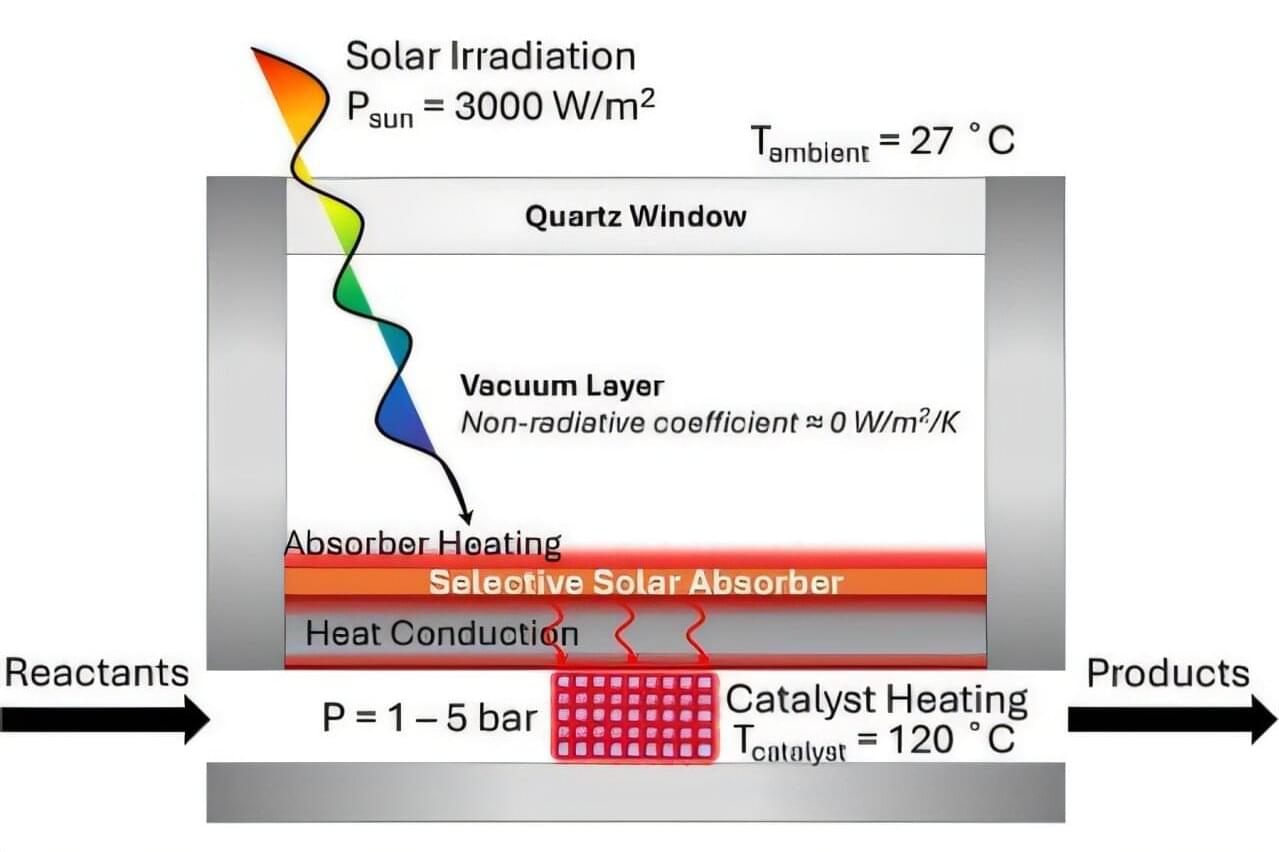
Increasing energy demands and problems associated with burning fossil fuels have heightened interest in more sustainable energy sources, such as sunlight. But there are still areas where carbon-based fuel remains the standard, such as in the aviation industry. To address this need, scientists have been working to devise a way to use sunlight to generate solar-thermal heating that could then drive the chemical reactions that are needed to make jet fuel with net-zero carbon emissions.
Now, a team at Caltech that is part of a Department of Energy (DOE) Energy Innovation Hub known as the Liquid Sunlight Alliance, or LiSA, has developed such a solar-thermal heating system on a small scale and demonstrated that it can successfully drive an important reaction for jet fuel production.
Completely powered by solar energy, the so-called photothermocatalytic reactor incorporates a spectrally selective solar absorber to maximize the generation of solar-thermal heating. The modular design of the reactor takes advantage of current fabrication technologies and existing silicon solar panel production infrastructure.
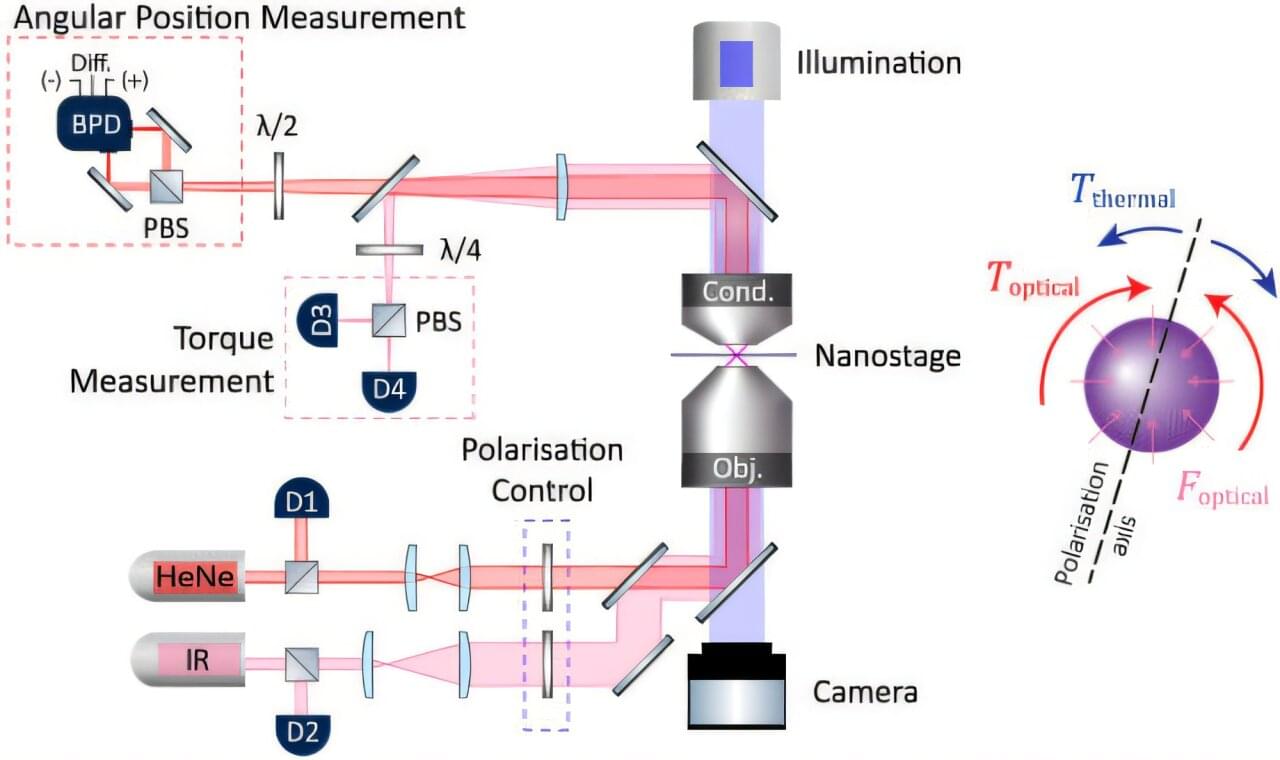
Researchers will soon be able to study biological changes at scales and speeds not previously possible to significantly expand knowledge in areas such as disease progression and drug delivery.
Physicists at The University of Queensland have used “tweezers made from light” to measure activity within microscopic systems over timeframes as short as milliseconds. Professor Halina Rubinsztein-Dunlop from UQ’s School of Mathematics and Physics said the method could help biologists understand what was happening within single living cells.
“For example, they will be able to look at how a cell is dividing, how it responds to outside stimuli, or even how chemical reactions affect cell properties,” Professor Rubinsztein-Dunlop said.